Executive Chief Engineer Explains Why the C8 Corvette Was “Mid-Engine or Bust” (And the Real Reason It’ll Never Have a Manual Transmission)
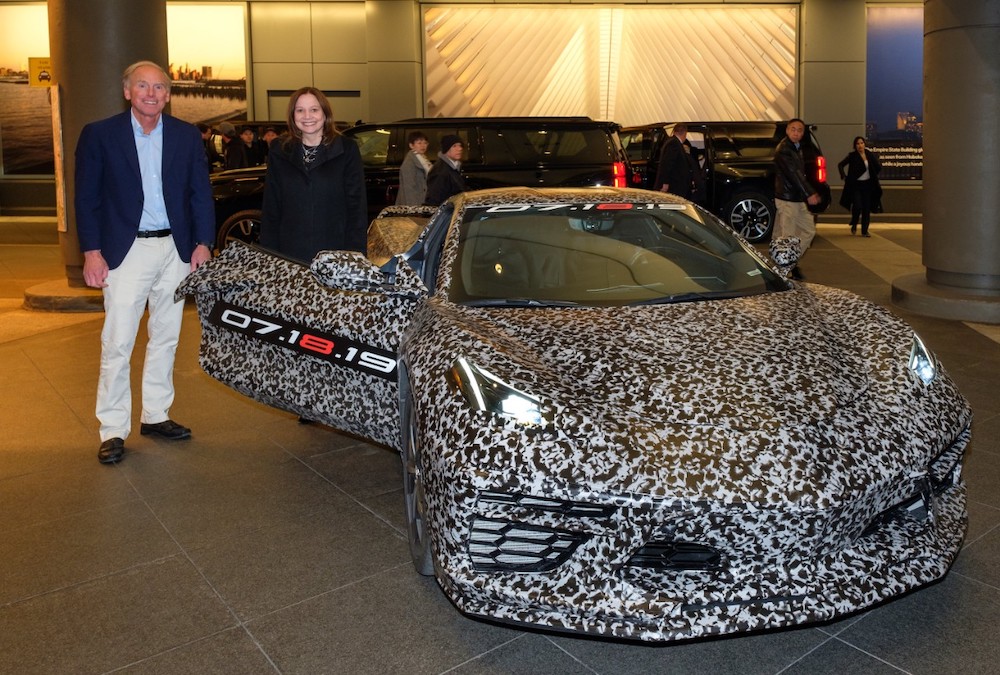
Bob Lutz: “Anyone Caught Working on a Mid-Engine Corvette will be Fired.” Corvette Engineers: “Hold My Secret Project Beer”
Got a great one for you today, folks. The nitty. The gritty. All the great mid-engine Corvette origin story details as told by the man himself, Corvette Executive Chief Engineer, Tadge Juechter. Juechter recently joined CorvetteForum member and media contributor, Steven Garrett, for a thrilling interview on Garret’s podcast, Corvette Today. which you can listen to right here:
I encourage everyone to listen to the whole podcast episode because Tadge tells a ton of great stories, including how GM’s Bob Lutz threatened to fire anyone caught working on a mid-engine Corvette. Here are a few highlights:
Corvette Engineers Realized They Needed a Mid-Engine Corvette While Developing the C6 ZR1
The idea of a mid-engine Corvette dates back to the early 1960s, when Zora Arkus-Duntov was building prototypes and race cars. But things became “serious” when Tadge and his team were working on the supercharged C6 ZR1. It was the program’s first supercharged Corvette, which made it bigger and heavier than the LS7 in the C6 Z06. With a 52-48 nose-heavy weight balance, Tadge and team were “concerned the Z06 would win 0-60” races, which would break Corvette trim level protocol. “When you move up in the model line you want everything better.”
With the transmission already moved rearward, and you need to get more horsepower to the ground, the only heavy thing to move back is the engine. And that’s when they realized the future of Corvette performance wasn’t horsepower. It was, “mid-engine or bust.”
The C7 Corvette Should Have Been Mid-Engine, but The Economy Crashed
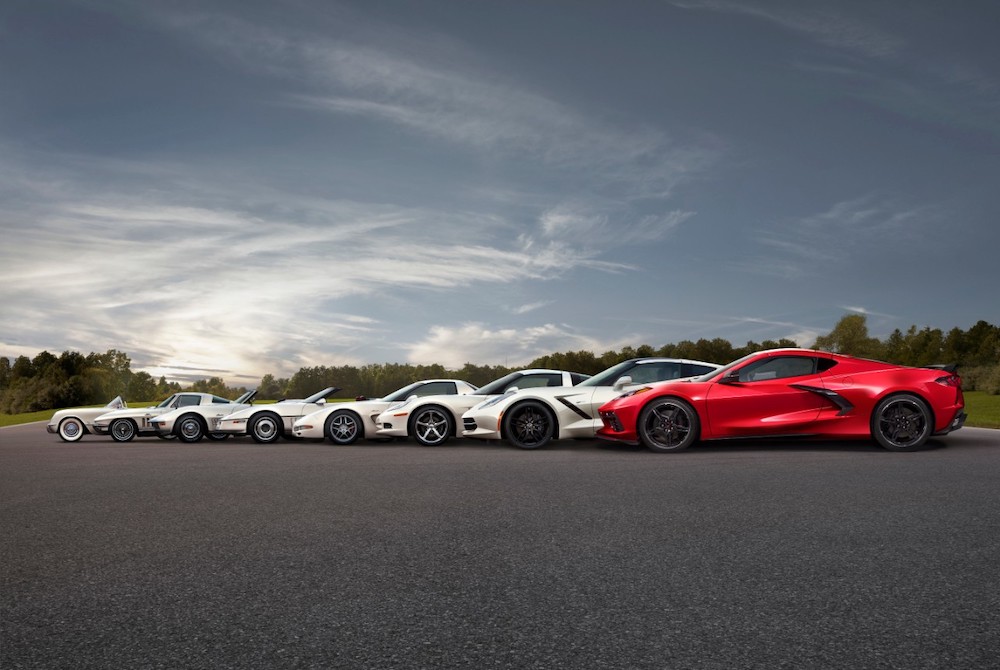
Tadge and team “had done some planning around a mid-engine C7,” but then Wall Street and a housing bubble crashed the world economy. GM’s bankruptcy “forced [GM] to lock down spending, so they didn’t have money for new products. So we had to retrench.” While the media said GM needed more small cars to climb back out of bankruptcy, GM’s salvation was based more in full-sized trucks and, you guessed it, a new Corvette. And, funny enough, the Treasury Department folks to came to inspect GM’s business were also Corvette fans.
“Forced to postpone our aspirations,” the Corvette team set to work on a front-engine C7. But Tadge and team still set a few lofty goals. It’s the first Corvette with standard carbon fiber panels. The first with a premium interior. And they had to create a new shop to build the aluminum frame. Also, the 7-Speed transmission with rev-matching “was a real joy to get done.” The Performance Data Recorder (PDR) “turned out to be a big hit.” And, even though they got some hate mail, Tadge and team are proud of the design elements — premium interior materials and moving to non-rounded headlights.
The C7 was Originally Going to be a Very Short, Very Basic Generation
Tadge says the Z06 and ZR1 weren’t originally part of the C7 Corvette generational plan. They, “thought it would be a relatively short life cycle” before moving onto the mid-engine C8. But they “realized we had a lot more opportunity with the C7 architecture. The aluminum structure could handle a lot more power.” Which lead to what Tadge calls the “full suite of models”, including the Stingray, Grand Sport, Z06, and ZR1.
“Anyone caught working on a mid-engine Corvette will be fired.”
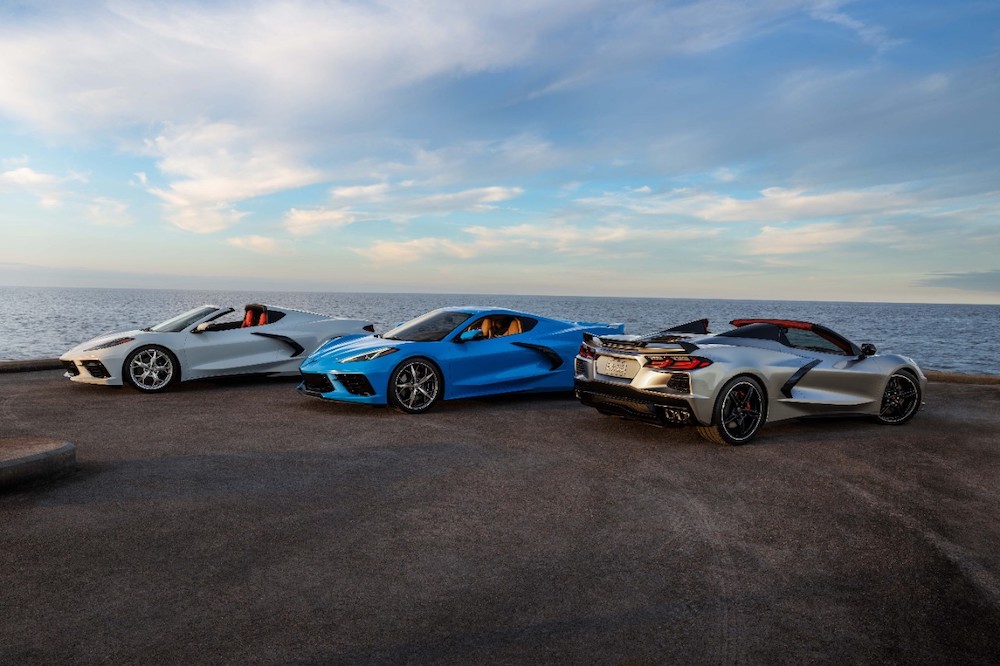
The Corvette team is always working on things “four years ahead of what we’re talking about publicly.” In that sense, while they were launching the C7, they had to not only figure out how to design and manufacture the mid-engine C8, but also figure out how to pitch senior management at GM. “How do we start the conversation? How do we convince the leadership? It’s a big business risk. Why walk away from a successful business? They saw Zora chasing a wild dream.”
For Tadge and team, they wanted to embrace the toughest challenges first while retaining what people love about driving a Corvette. In other words, the car has to be a great sports car, but also very livable (and include room for luggage). Even though early consumer testing was positive — both Corvette fans and European sports car owners preferred generic mid-engine design language — they had to do a lot of advanced work in secret. Why? Because GM’s Bob Lutz said in a meeting, “Anyone caught working on a mid-engine Corvette will be fired.”
Despite the threat, Tadge and team had enough evidence that the mid-engine C8 was a good idea to persist. And so they began pitching the idea up the chain, focusing not on design or styling or cool factor, but the scient. They eventually wound up back in Lutz’s office, where he too finally said yes, saying to Tadge, “I’ve had a lot of people pitch me mid-engine before, but that’s the first time I’ve been convinced of it.”
According to Tadge, every other mid-engine Corvette “argument boiled down to, it’s really cool. We didn’t say anything about astethics.” For Tadge and team, it was all about “expanding the performance envelope.”
And then the real work began.
The Real Reason the C8 Corvette Will Never Have a Manual Transmission
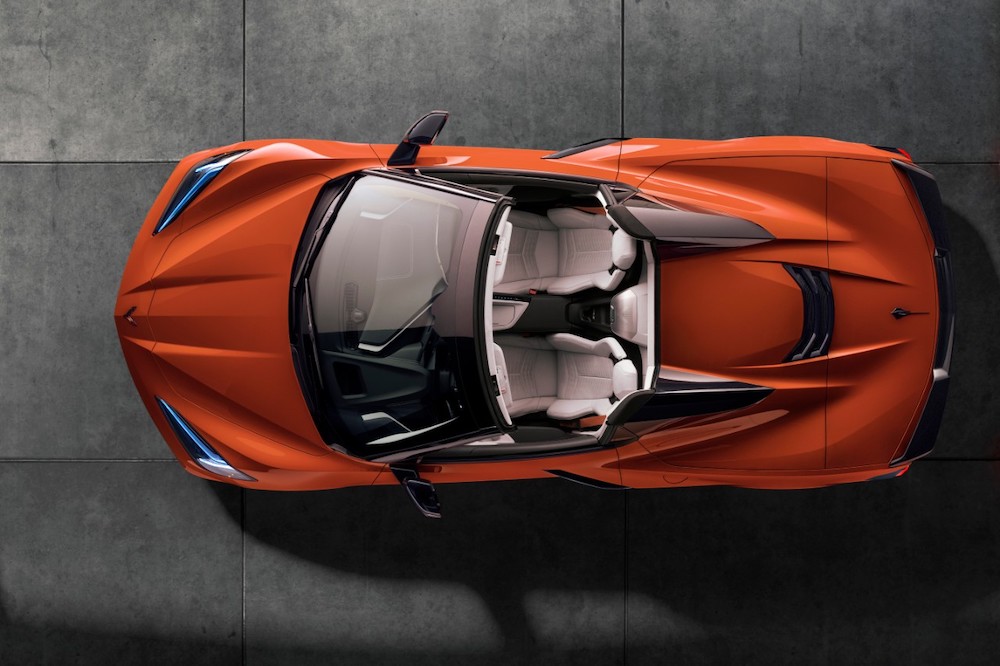
This is the biggest gripe we hear on CorvetteForum. “No manual, no sale.” But according to Tadge who has only purchased personal vehicles with manual transmissions, GM genuinely tried to have a manual option. But no manual transmission manufacturer would work with them on the project. Because a C8 manual transmission would need to be designed from scratch, it was too expensive to develop with too little payoff.
Plus, when you look at the numbers, even with enthusiasts vehicles like Corvette, manuals aren’t faring well. “We used to offer the Z06 and ZR1 in manual only and sold them in volume. But as soon as we offered the automatic, most everybody gets the automatic. So it’s hard to argue that you have to a manual transmission. We think the DTC is a good manual transmission. The paddles are instantly responsive. The way the transmission works is just like a manual transmission. If you want to pop into neutral, all you do it his both paddles, and your’e coasting. on both paddles.”
And Why DTC-Only is Actually Better for the Vehicle
“Once we realized a manual is off the table, commercially, then we were able to optimize the rest of the car around DTC-only. And you see many manufacturers of high-performance sports cars, this is what they do. They optimize around the DTC. So you don’t have three pedals, that allows you to arrange the pedal box your feet are in the perfect position for gas and break. It lets you do a really nice dead pedal.”
“The structure of the car can also be more efficient, routing structural elements where the clutch pedal would have been. The center tunnel is the car’s primary structural element, since they don’t rely on the roof. So when you punch a big hole in it, as we have for the prior generations [mechanical clutch linkage], you lose torsional regality. So having just a DTC with electronic shifters let us put no holes in that tunnel. It’s a big square thick tube. Gives the car regality and crashworthiness.”
The Full Spec of Tadge’s Current Company Corvette
If you’re curious what Tadge is driving around in these days, here’s how he spec’d out his company car, a 2021 C8 Corvette. It’s a Red Mist 3LT with natural tan interior. Interestingly, it’s a non-Z51 car, so the base chassis with the new FE2 MR shocks.
Tadge and Team are “Heartened” by the World’s Reaction to the C8: “Looks like it’s a hit.”
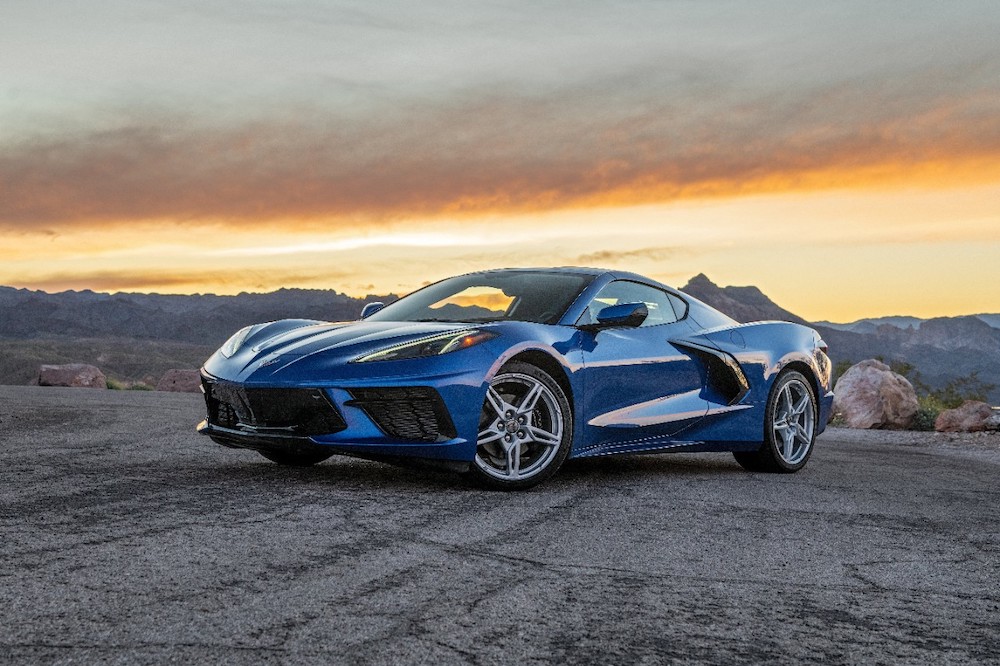
With positive reactions from customers and media around the world, the C8 Corvette isn’t just a hit, it’s a “global phenomenon.” Tadge says he and his team were “heartened” with the C8 reception. And they’re happy to see customers finally driving the cars. They also are aware that they’ve been unable to keep up with demand, but promising that everyone at GM is working as hard as they can to get as many C8s out into the world as possible.
What did you think of the interview? Head over HERE to the forums to let us know!
Photos: GM
Join the Corvette Forums now!
